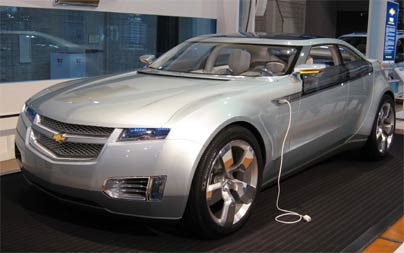A company with roots at MIT has been selected to develop battery cells to power the Chevrolet Volt, a highly anticipated plug-in hybrid car that General Motors hopes to begin selling in 2010.
The Detroit automaker announced Thursday that it selected A123Systems of Watertown to develop battery cells to meet the specific requirements of GM's E-Flex System-a technology that is expected to allow the Volt to travel around 40 miles on battery power alone.
A123Systems was co-founded in 2001 by Yet-Ming Chiang, the Kyocera Professor of Ceramics in MIT's Department of Materials Science and Engineering. Several of the company's key early employees also came from MIT.
A123 develops nanophosphate-based cell technology, which, according to company executives, provides higher power output, longer life and safer operations than other lithium ion battery chemistries over the life of the battery. The company's proprietary Nanophosphateâ„¢ technology is built on a new, highly active nanoscale material initially developed at MIT.
"It is extremely rewarding for the MIT research team to see how far our original laboratory discoveries have come," Chiang said. "While much remains to be done, this development is yet another example of the impact that university research can have on pressing societal problems such as energy and sustainability, as well as a tribute to the entrepreneurial spirit surrounding MIT."
The Volt concept car that GM unveiled in January at the Detroit Auto Show is equipped with both a gas tank and a battery to give drivers maximum flexibility. For commuters who drive fewer than 40 miles a day, the Volt would effectively use no gasoline and create zero emissions, saving an estimated 500 gallons of gasoline a year. For drivers who put in around 60 miles a day on the road, the Volt would have a fuel efficiency of about 150 miles per gallon.






